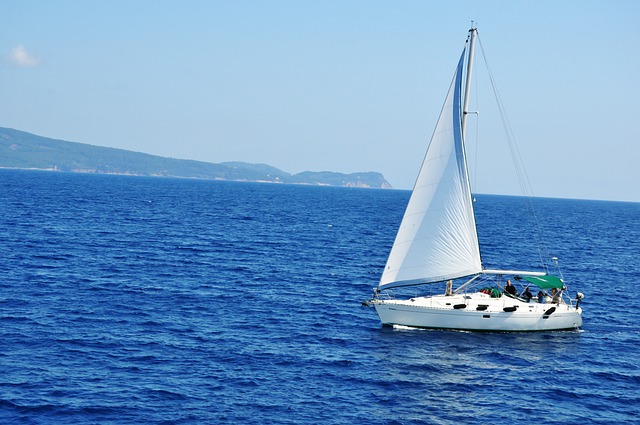Marine batteries play a critical role in maritime operations, facing challenges such as temperature extremes, humidity, and saltwater exposure that affect their lifespan. Understanding the chemical processes of lead plates immersed in sulfuric acid is essential for maximizing performance and durability. Regular maintenance, including monitoring water levels, ensuring proper ventilation, and cleaning terminals, extends their life. Proper charging practices are vital to prevent issues like water loss, sulfation, and thermal stress, which can reduce battery efficiency. Boat owners should utilize charge profiles tailored for marine use and perform equalizing charges and periodic full discharges followed by recharging to maintain health. Environmental factors like pollution can also impact performance, necessitating proactive measures to manage charging cycles and upkeep. Adhering to manufacturer guidelines and conducting routine checks on voltage and amperage help preserve the battery's longevity. Storing batteries in cool, shaded areas and following best practices for maintenance are key to ensuring a marine battery delivers consistent performance throughout its service life. Regular upkeep is paramount for optimizing the lifespan of a marine battery.
Exploring the longevity of a marine battery necessitates delving into various pivotal factors that influence its lifespan. This article dissects ten critical elements affecting your vessel’s power source, from the intricate chemistry of marine batteries to the environmental conditions they endure. Understanding the role of charge patterns and implementing effective maintenance strategies are key to maximizing your battery’s operational years. Join us as we navigate these factors to ensure your marine battery remains reliable for your nautical adventures.
- Understanding Marine Battery Chemistry and Its Role in Longevity
- The Impact of Charge Patterns on Marine Batteries
- Environmental Factors Influencing Marine Battery Performance
- Maintenance Best Practices for Prolonging Your Marine Battery's Life
Understanding Marine Battery Chemistry and Its Role in Longevity

When delving into the factors affecting boat battery lifespan, one must first grasp the fundamental chemistry at play within a marine battery. These batteries, distinct from their automotive counterparts, are designed to withstand the harsh conditions of a maritime environment, which includes variations in temperature, humidity, and exposure to saltwater. Understanding the composition and operation of these batteries is crucial for optimizing their performance and longevity.
Marine batteries primarily consist of lead plates submerged in a sulfuric acid electrolyte solution. During discharge, lead dioxide on the positive plate undergoes oxidation while the lead on the negative plate undergoes reduction. This chemical reaction generates electrical energy, which is harnessed to start an engine or power onboard electronics. The efficiency and frequency of these reactions dictate the battery’s lifespan. Factors such as state of charge cycling, temperature extremes, and proper maintenance can influence the rate at which active material is consumed, affecting how long a marine battery will operate effectively. Regularly monitoring the water level in lead-acid batteries or ensuring that AGM or Gel batteries are properly ventilated are examples of maintenance practices that contribute to a longer service life. By understanding the intricate relationship between the chemistry within these batteries and the demands placed upon them, boat owners can make informed decisions to enhance their marine battery’s longevity.
The Impact of Charge Patterns on Marine Batteries

Marine batteries, unlike their automotive counterparts, are subject to unique environmental and operational conditions that can significantly influence their lifespan. One critical factor affecting marine batteries is the pattern of charge and discharge they undergo. Consistent deep cycling, which often occurs in marine applications due to the frequent starting and operating of onboard electrical systems, can lead to early capacity fade if not managed properly. Regularly drawing down the battery to a large percentage of its total capacity and then fully recharging it stresses the battery’s plates and electrolyte solution, potentially reducing its service life.
The efficiency with which a marine battery is charged also plays a pivotal role in its longevity. Chargers that are set to deliver a fast charge can cause excessive gassing, leading to water loss and potential plate sulfation. Conversely, a slower charge not only is gentler on the battery but also more efficient, as it allows better absorption of the electrical energy without causing thermal stress. It’s important for boat owners to monitor their charging systems and select appropriate charging profiles that are tailored for marine applications. By understanding and managing these charge patterns, users can extend the life of their marine batteries, ensuring they remain reliable during extended voyages or frequent short trips on the water. Regular maintenance practices, such as equalizing charges and periodic full discharges followed by recharging, can also help to maintain optimal battery health.
Environmental Factors Influencing Marine Battery Performance

Marine batteries are subject to a range of environmental factors that can significantly influence their performance and lifespan. Temperature extremes are particularly impactful; excessively high temperatures can lead to reduced battery capacity, while cold conditions can thicken the sulfuric acid in wet-cell batteries, increasing internal resistance and reducing efficiency. Salinity and humidity levels within the marine environment also play a role; salt deposits can corrode terminals and connectors, leading to poor electrical connections and shortened battery life. Similarly, high humidity can encourage corrosion and the growth of electrolyte crystals that impede function.
Another critical environmental factor is the exposure to various types of pollution, including fuel spills and other contaminants. These can contaminate the battery’s electrolyte solution, causing a loss of power and potentially leading to battery failure. Additionally, the frequency and duration of marine battery use in fluctuating temperatures and conditions require careful consideration. Regularly cycling between charging and discharging under these varied conditions can strain the battery, affecting its endurance and reducing its overall lifespan. Proper maintenance and regular cleaning to remove salt and corrosion are essential for preserving the performance of marine batteries in their demanding environment.
Maintenance Best Practices for Prolonging Your Marine Battery's Life

Regular maintenance is key to prolonging the life of your marine battery. To ensure optimal performance and longevity, it’s crucial to adhere to several best practices. Firstly, consistently check and maintain appropriate water levels in flooded lead-acid batteries; this prevents excessive discharge and potential overcharging. Additionally, cleaning terminals and cables with a wire brush or sandpaper, followed by applying a coat of anti-corrosion paste or grease, can mitigate the effects of saltwater and ensure good electrical connections. Regular charging routines that avoid full discharges are beneficial, as marine batteries have a limited number of charge/discharge cycles before their capacity diminishes. Keeping your battery on a maintenance charger when not in use can prevent sulfation, a common issue that leads to reduced efficiency and shorter lifespans. Monitoring the charging system’s voltage and amperage regularly will help identify potential issues early, allowing for timely repairs or adjustments. Storing your marine battery in a cool, dry place, away from direct sunlight, when not in use can also protect against premature aging. Lastly, understanding and adhering to the manufacturer’s recommendations regarding temperature, charging rates, and load management will help maintain the integrity of your marine battery’s performance and extend its serviceable life.
marine battery longevity is a multifaceted issue influenced by various factors, from their chemical composition to the charging patterns and environmental conditions they face. Understanding these elements is crucial for any boat owner aiming to maximize their marine battery’s lifespan. Regular maintenance practices are equally important, as they can significantly affect performance and durability. By considering each of the 10 factors discussed in this article, from the intricacies of marine battery chemistry to the influence of temperature extremes and salinity, boat owners can take proactive steps to ensure their marine batteries serve them reliably for years to come. It’s always the small, consistent actions that lead to optimal marine battery performance and longevity, ensuring every voyage is powered by a dependable source of energy.
